Introduction to Blepharoplasty Demographics
Eyelid surgery, medically known as blepharoplasty, is a popular cosmetic procedure that attracts a diverse range of patients. This listicle delves into 25 revealing facts about who gets eyelid surgery, focusing particularly on age-related trends, motivations, and outcomes. By examining statistics and expert insights, we uncover how age influences the demand, benefits, risks, and demographics of blepharoplasty, helping readers better understand this widely performed surgery.
Eyelid Surgery Key Facts
- Eyelid surgery, or blepharoplasty, ranks as the second most performed cosmetic procedure in the US with over 325,000 cases in 2020.
- The typical patient is between 40 and 55 years old, with over 90% being 40 or above, but younger adults are increasing seeking early intervention.
- There is a notable rise in younger patients aged 18-39, motivated by aesthetic and functional concerns, often influenced by social media and celebrities.
- Patients over 55 years old account for more than half of eyelid surgeries**, seeking both cosmetic rejuvenation and functional benefits like improved vision.
- Early, preventive eyelid surgeries benefit younger adults by delaying more severe age-related changes, often involving less invasive techniques like laser and collagen induction.
- Genetics and environmental factors, like sun exposure, play a significant role in eyelid conditions among young people, leading to early concerns about hooded or drooping eyelids.
- Younger patients prefer minimally invasive procedures such as Accutite, lasers, Botox, and fillers, due to their minimal scarring and downtime.
- There is a growing number of male patients, now about 10-15%, seeking eyelid surgery mainly for functional improvements and a more alert appearance.
- Most women pursue eyelid surgery for cosmetic reasons to achieve a youthful, rested look, with social media driving the trend.
- Eyelid surgery results typically last 5 to 15 years, with younger patients enjoying longer effects, but aging may necessitate touch-up procedures.
1. Blepharoplasty’s Position Among Top Cosmetic Procedures
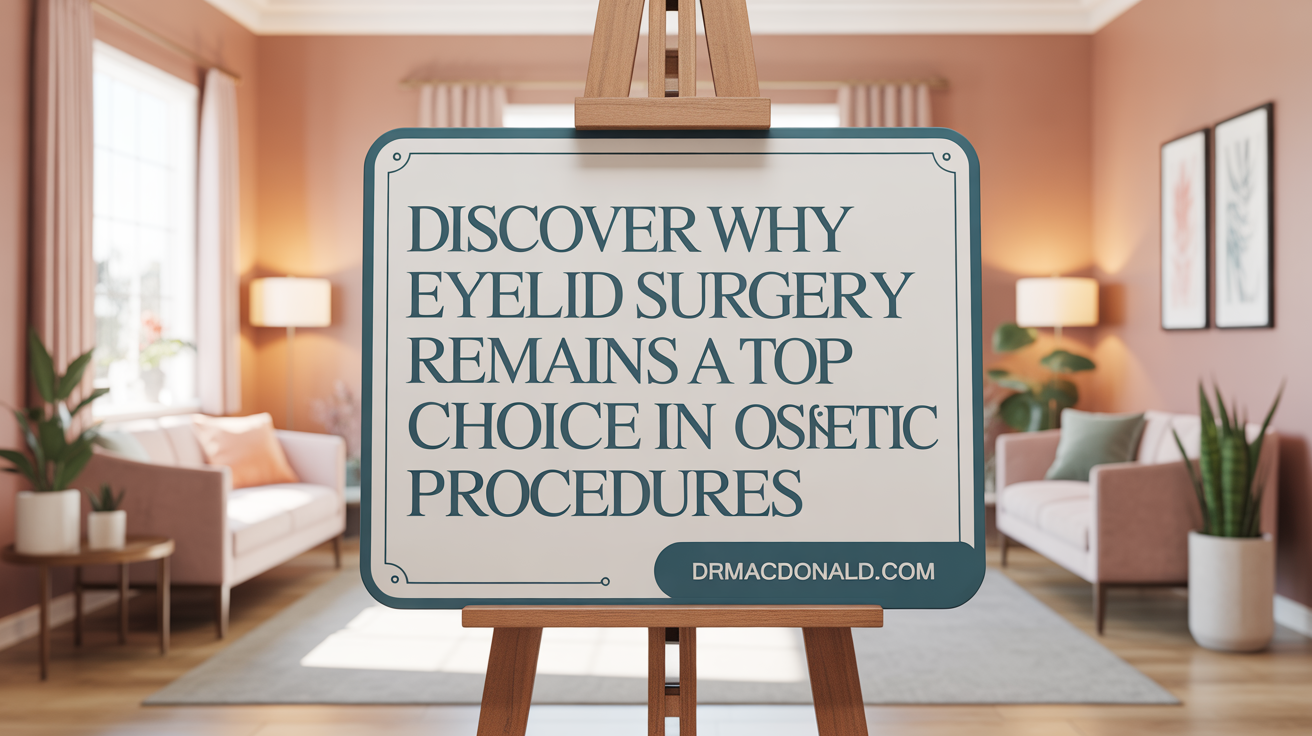 Eyelid surgery, or blepharoplasty, remains one of the most sought-after cosmetic procedures in the United States. In 2020, it ranked as the second most performed cosmetic surgery, just behind rhinoplasty, according to the American Society of Plastic Surgeons. With over 325,000 Americans undergoing eyelid surgery that year, its popularity continues to grow.
Eyelid surgery, or blepharoplasty, remains one of the most sought-after cosmetic procedures in the United States. In 2020, it ranked as the second most performed cosmetic surgery, just behind rhinoplasty, according to the American Society of Plastic Surgeons. With over 325,000 Americans undergoing eyelid surgery that year, its popularity continues to grow.
Recent statistics highlight its strong position within American cosmetic procedures, reflecting a broad demographic that spans from young adults in their 20s to seniors over 65. Younger patients, especially those between 18-39, contribute significantly to current trends, often seeking early intervention to maintain a youthful appearance and potentially prevent more invasive procedures later.
The procedure’s high ranking is supported by ongoing advancements and changing perceptions about cosmetic surgery, driven partly by social media influence and celebrity endorsements. These factors have contributed to a decline in stigma, encouraging more individuals to consider blepharoplasty as a safe and effective way to rejuvenate their look.
2. Average Age of Patients Undergoing Eyelid Surgery
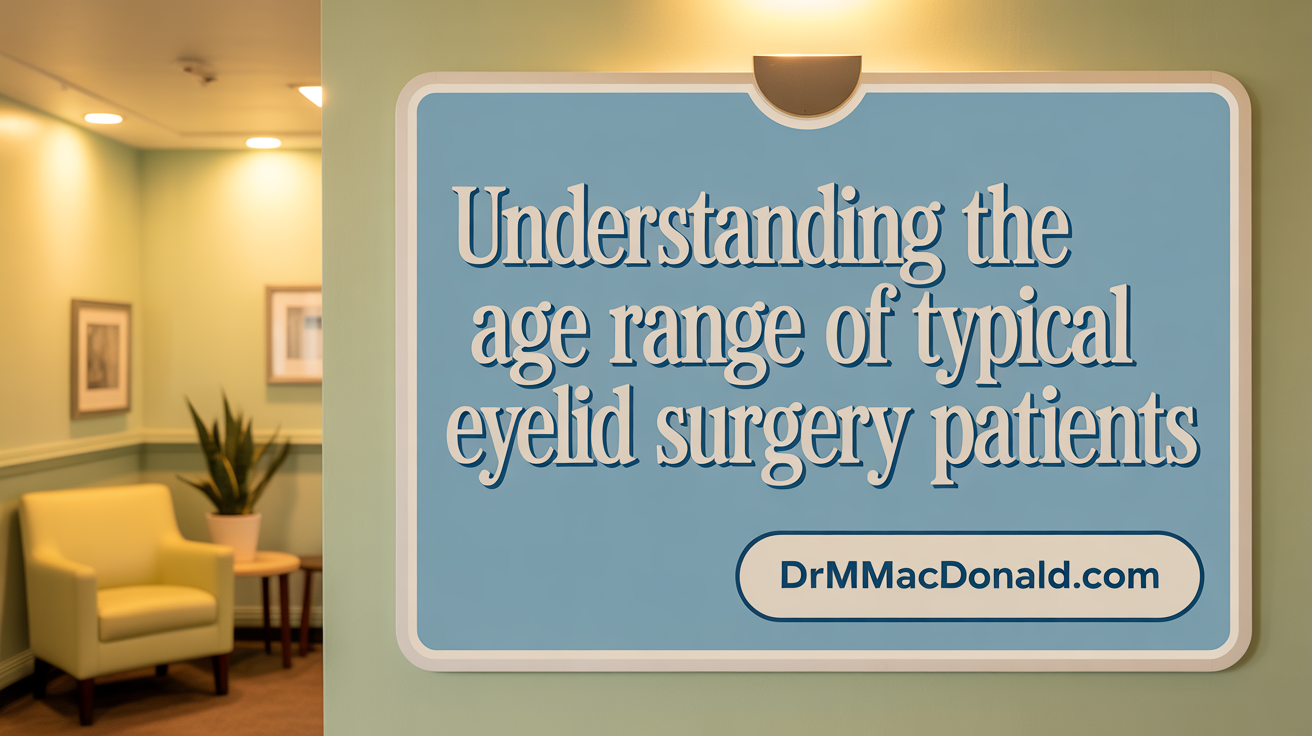 Eyelid surgery, known as blepharoplasty, is popular among a wide age range of patients. The typical patient tends to be between 40 and 55 years old, with the average age around 55. While many older individuals consider the procedure to combat age-related drooping and bags, an increasing number of younger adults, including those in their 20s and 30s, are seeking early intervention for aesthetic or functional reasons.
Eyelid surgery, known as blepharoplasty, is popular among a wide age range of patients. The typical patient tends to be between 40 and 55 years old, with the average age around 55. While many older individuals consider the procedure to combat age-related drooping and bags, an increasing number of younger adults, including those in their 20s and 30s, are seeking early intervention for aesthetic or functional reasons.
The age distribution shows that over 90 percent of blepharoplasty patients are aged 40 and above, with half being 55 or older. This trend aligns with the fact that the procedure best benefits those in their middle age or later. However, with improvements in techniques and a shifting perception of cosmetic surgery, more patients in their late teens and early 20s are now exploring eyelid treatments, particularly for maintenance or minor correction.
The common age range for eyelid surgery in the United States is generally from 25 upwards, with substantial benefits observed in those over 30. This broad age spectrum reflects the procedure’s versatility, addressing both aging signs and early aesthetic concerns.
3. Younger Patients Are Increasingly Seeking Eyelid Surgery
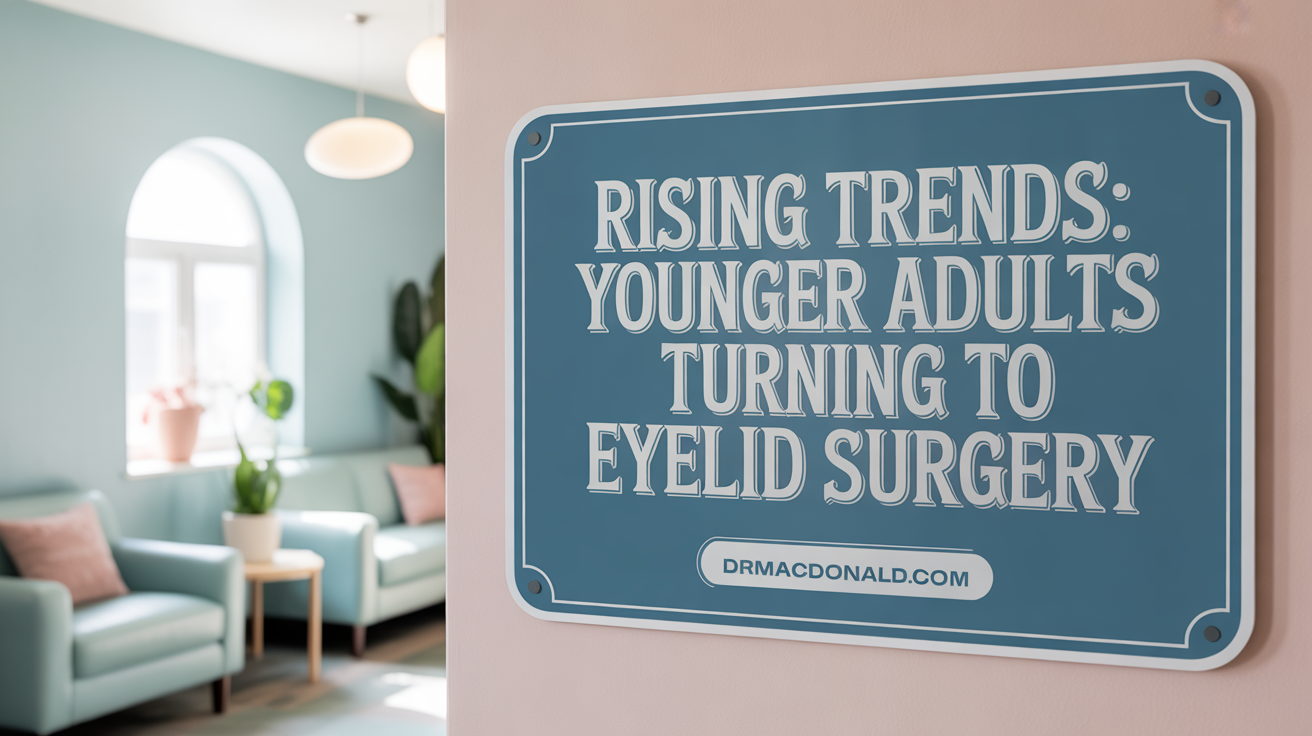
Rising interest among early 20s and 30s
In recent years, there has been a notable shift in the demographics of eyelid surgery patients. Data from experienced surgeons like Dr. Kruavit indicates that individuals aged 18-39 now form the coregroup of candidates. Younger patients in their early 20s and 30s are actively seeking blepharoplasty, driven by both aesthetic and functional concerns.
Reasons for younger patient interest
Younger individuals are motivated by a variety of factors. Many aim to improve their cosmetic appearance, enhance eye shape and symmetry, and enjoy broader makeup options. Additionally, some seek to correct early signs of hooded eyelids caused by genetics or environmental factors, preventing more pronounced aging later.
Beyond appearance, functional issues such as limited visual fields due to drooping eyelids are also reasons for opting for surgery. Furthermore, younger patients tend to be more aware of the long-lasting benefits of blepharoplasty, often expecting results that will last 10 to 15 years.
Impact on demographics
This increasing interest among younger adults is reshaping the typical age profile of eyelid surgery. Previously, most patients were over 40, with average ages around 55. Now, the younger demographic is also participating, which encourages developments in less invasive procedures like lasers and mini-invasive techniques such as Accutite. These options induce collagen production gradually, offering a less downtime approach for early signs.
This trend is supported by changing perceptions, partly influenced by social media celebrities like the Kardashians, which reduces stigma around plastic surgery among youth. As a result, clinics see a broader, more diverse pool of candidates, leading to ongoing innovations suited to this demographic.
4. The 40+ Age Group Dominates Eyelid Surgery Demographics
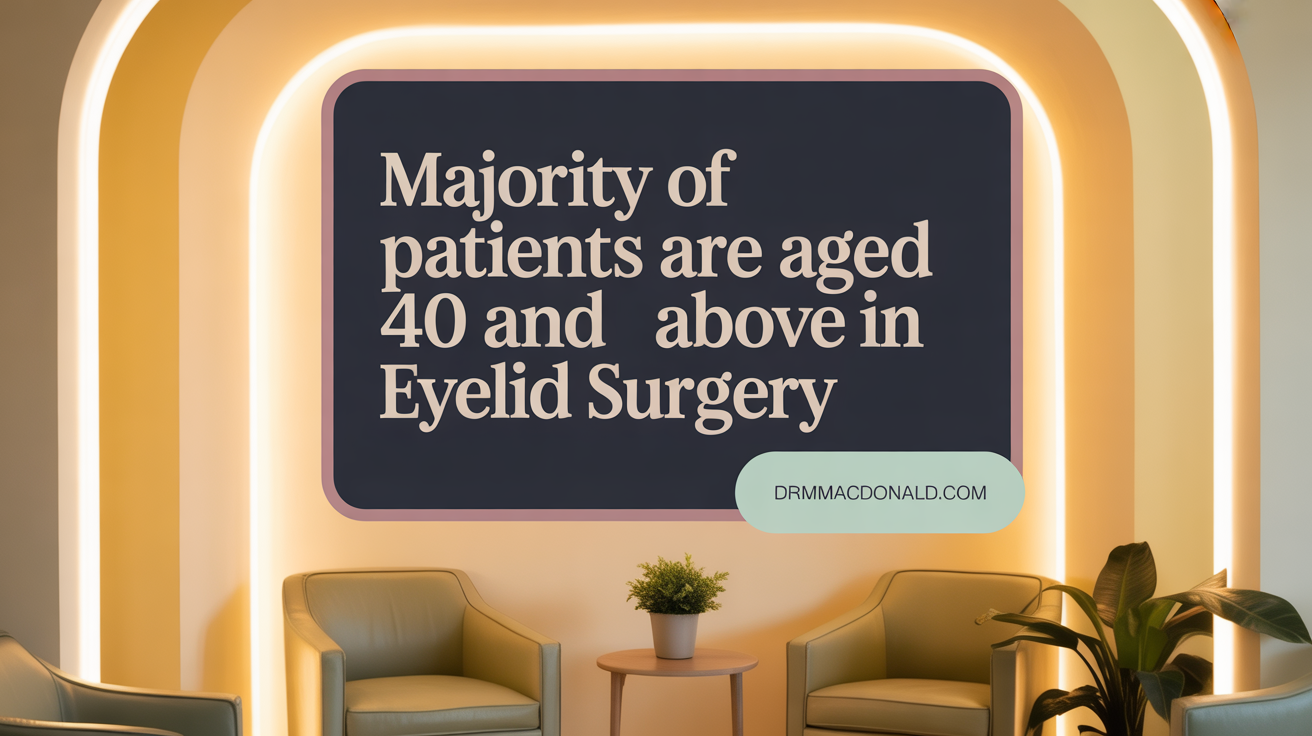
Who are the main patients undergoing eyelid surgery?
Most patients seeking blepharoplasty are aged 40 and above, with over half of all procedures performed on those 55 years old and older. According to data, the average age for eyelid surgery is around 55, reflecting that this aging group benefits most from the procedure.
What benefits do older adults gain?
Patients in their 40s and beyond often see dramatic improvements, including a more alert, rested appearance, smoother skin, and less sagging around the eyes. These changes can also lead to functional benefits such as improved vision if sagging eyelids obstruct sight.
What is the typical age breakdown?
While individuals as young as 18 can be candidates, the bulk of eyelid surgery patients fall within the 40 to 60 age range. Older patients, particularly those 65 and over, tend to have increased risks, so surgery for this group is less common.
| Age Range | Patient Percentage | Main Benefits | Additional Notes |
|---|---|---|---|
| 18-39 | Rare, younger patients but emerging interest | Early correction, maintenance | Younger demographic, increasingly popular |
| 40-59 | Majority of patients | Long-lasting rejuvenation, functional improvements | Optimal age for most benefits |
| 60+ | Smaller group | Addressing age-related sagging, vision issues | Increased surgical risks |
5. Older Adults (55+) Represent Over Half of Eyelid Surgery Patients
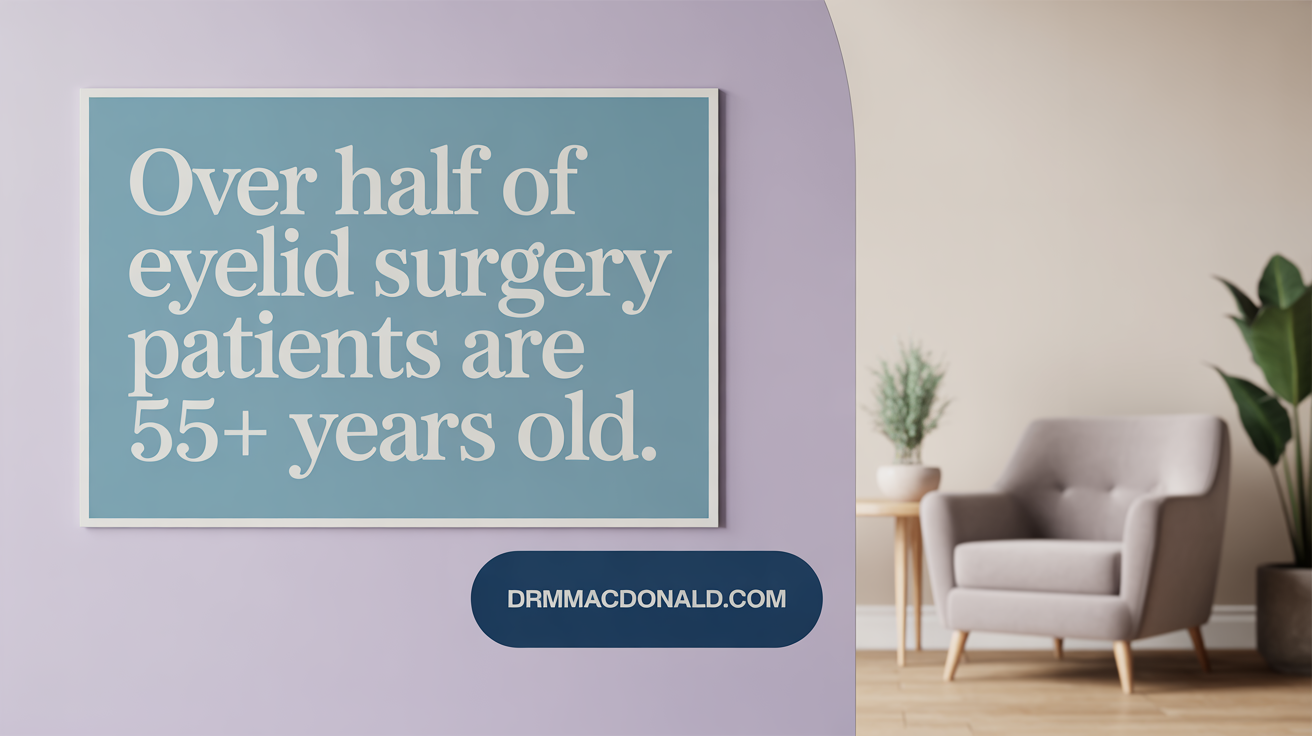 More than half of the individuals who undergo eyelid surgery are aged 55 and older. This group typically represents the largest cohort seeking the procedure, with the average patient age around 55 years. The motivation behind surgery in this age bracket often involves addressing age-related sagging and excess skin that contribute to a tired or aging appearance. Additionally, some patients experience functional issues such as impaired vision due to drooping eyelids, making surgery both a cosmetic and a medical necessity. The results in this demographic are generally very positive, providing a rejuvenated look that aligns with their overall health and aesthetic goals.
More than half of the individuals who undergo eyelid surgery are aged 55 and older. This group typically represents the largest cohort seeking the procedure, with the average patient age around 55 years. The motivation behind surgery in this age bracket often involves addressing age-related sagging and excess skin that contribute to a tired or aging appearance. Additionally, some patients experience functional issues such as impaired vision due to drooping eyelids, making surgery both a cosmetic and a medical necessity. The results in this demographic are generally very positive, providing a rejuvenated look that aligns with their overall health and aesthetic goals.
6. Preventive Eyelid Surgery Benefits for Younger Adults
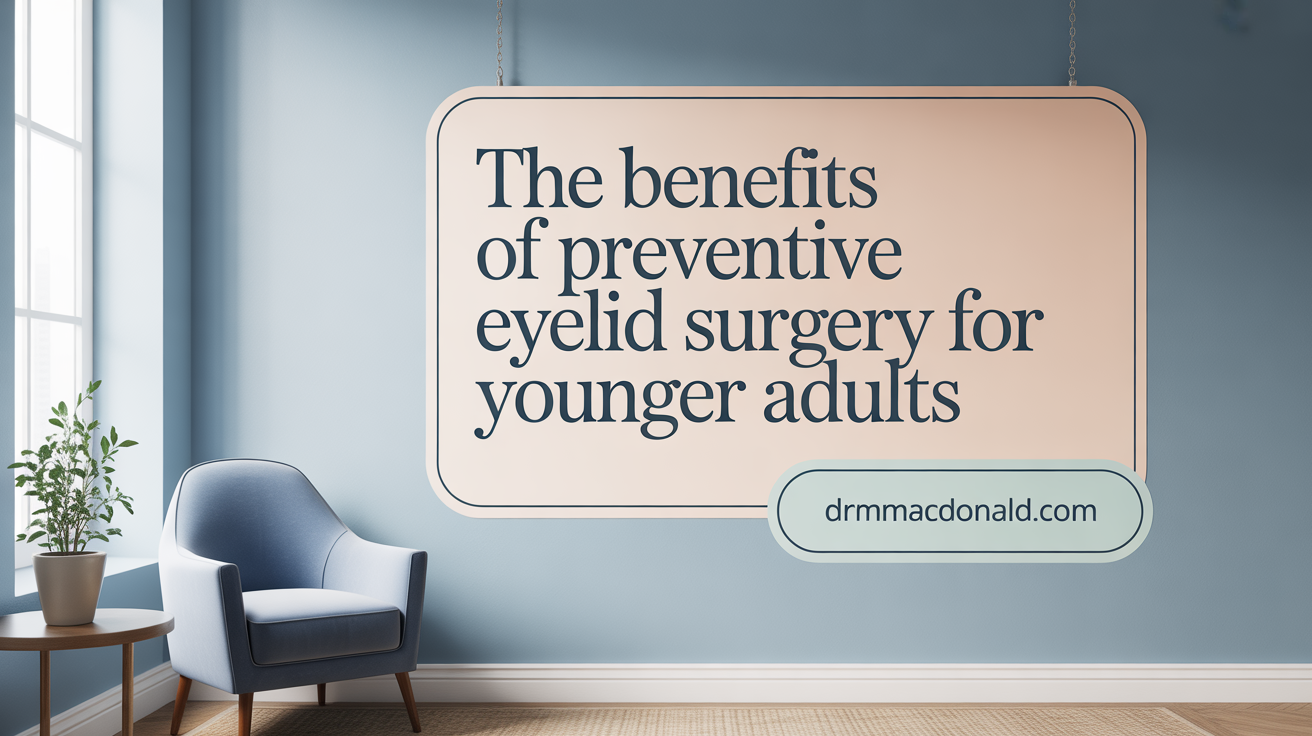 Early eyelid surgery can offer several advantages for younger adults. By addressing early signs of drooping or excess skin, patients can prevent more severe aging features later in life.
Early eyelid surgery can offer several advantages for younger adults. By addressing early signs of drooping or excess skin, patients can prevent more severe aging features later in life.
Proactively treating the eyelids with procedures like blepharoplasty or minimally invasive options such as Accutite can slow down the overall aging process around the eyes.
Younger individuals often opt for less invasive techniques that induce collagen production and tighten the eyelid tissue gradually. These methods typically involve shorter incisions, less scarring, and minimal downtime, making them attractive options.
Implementing these preventive measures allows patients to maintain a youthful, rested appearance and enjoy benefits like broader makeup application, improved vision, and higher confidence for years to come.
7. Genetics and Environment Influence Eyelid Conditions in Youth
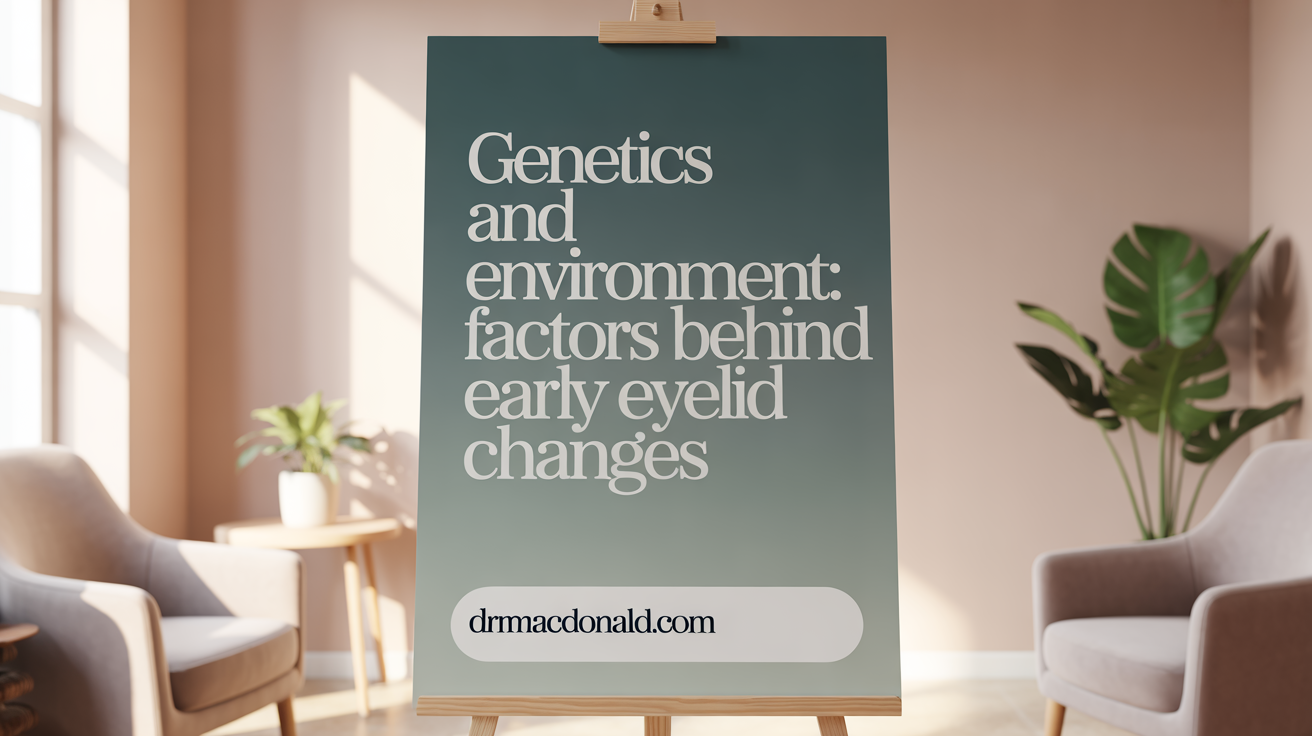 Hooded or heavy eyelids in younger people often result from genetic factors and environmental influences. Some individuals inherit traits that lead to excess skin or drooping eyelids early in life. Environmental factors such as exposure to sun, smoking, and lifestyle habits can accelerate skin aging, contributing to these conditions.
Hooded or heavy eyelids in younger people often result from genetic factors and environmental influences. Some individuals inherit traits that lead to excess skin or drooping eyelids early in life. Environmental factors such as exposure to sun, smoking, and lifestyle habits can accelerate skin aging, contributing to these conditions.
Young people seek eyelid surgery not only for cosmetic reasons but also to improve vision if sagging eyelids obstruct their sight. Advances in less invasive procedures and a decreasing social stigma make surgery more accessible and appealing to a broader age range.
Genetics plays a significant role in predisposing certain individuals to eyelid issues. Environmental factors, like sun damage, can worsen these traits over time, prompting some to consider early intervention to prevent further aging signs.
8. Younger Patients Favor Minimally Invasive Procedures
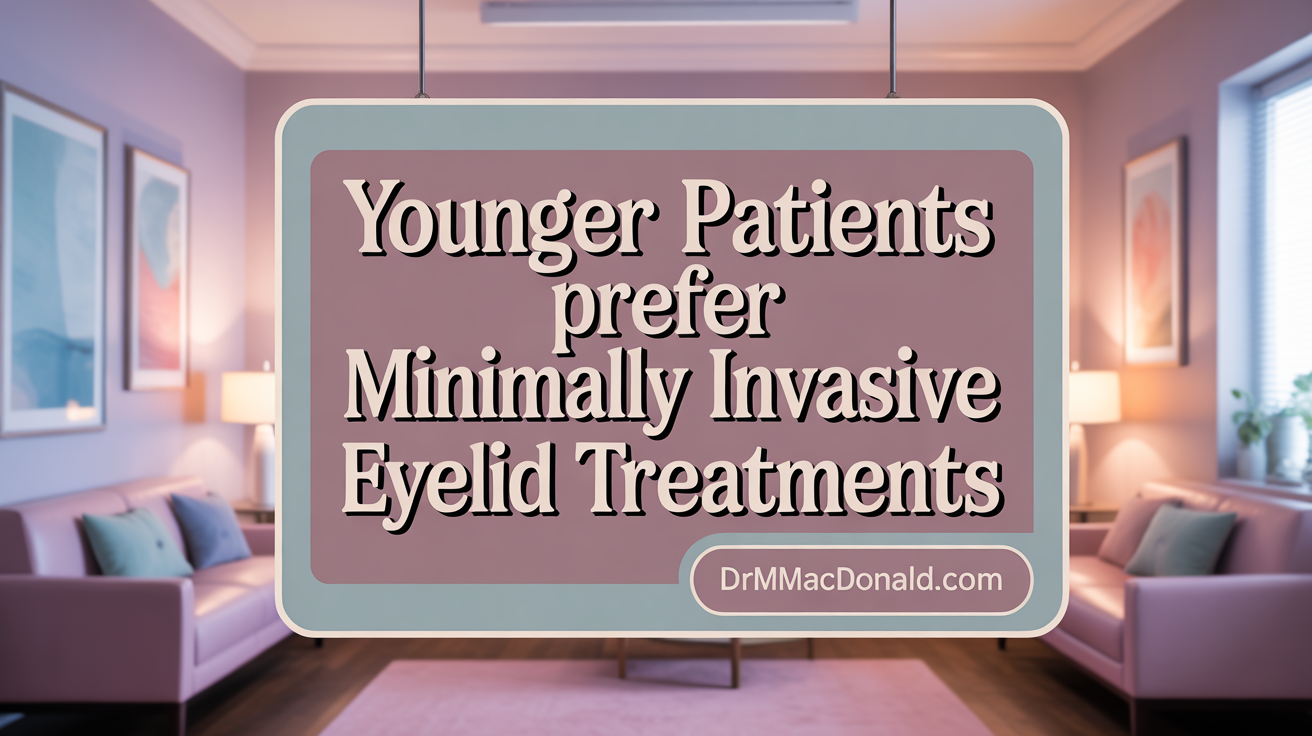 Many younger patients seeking eyelid treatments are turning to less invasive options such as Accutite, laser therapies, Botox, and fillers. These procedures help maintain a youthful eyelid appearance and are favored for their minimal scarring and downtime.
Many younger patients seeking eyelid treatments are turning to less invasive options such as Accutite, laser therapies, Botox, and fillers. These procedures help maintain a youthful eyelid appearance and are favored for their minimal scarring and downtime.
Accutite, a small, targeted device, induces collagen production to tighten the eyelid gradually, making it ideal for early signs of hooding. Laser treatments and injectables like Botox and fillers provide quick, effective ways to refresh the eye area without surgery.
This trend is driven partly by a desire to prevent or delay more invasive surgeries later in life. Younger patients often prefer procedures that preserve natural expressions while avoiding lengthy recovery times.
Overall, these minimally invasive techniques offer a proactive approach to eyelid care, allowing patients to maintain a vibrant and youthful look with less risk and discomfort.
9. The Increase of Male Patients in Eyelid Surgery
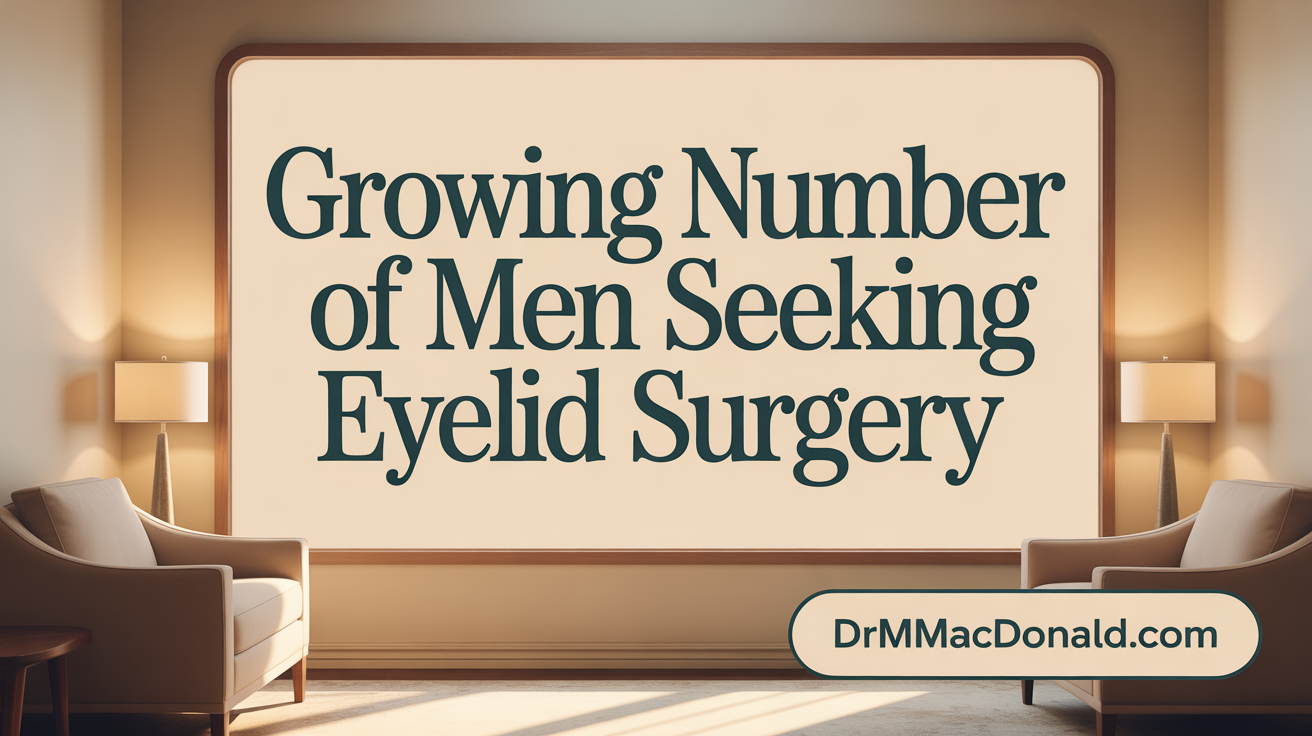 In recent years, more men are opting for eyelid surgery, reflecting changing social attitudes.
In recent years, more men are opting for eyelid surgery, reflecting changing social attitudes.
While traditionally many sought the procedure for cosmetic reasons, an increasing number of male patients are now pursuing the surgery for functional improvements, such as better vision caused by drooping eyelids.
Men tend to seek eyelid surgery to achieve a more alert and youthful look, often combining it with facial rejuvenation procedures.
This trend is driven by greater awareness and less stigma surrounding cosmetic surgery among men.
Statistics show a steady rise in male participation, with recent data indicating that they now account for about 10-15% of all eyelid surgeries, up from lower percentages in previous decades.
10. Women Predominantly Seek Eyelid Surgery for Cosmetic Purposes
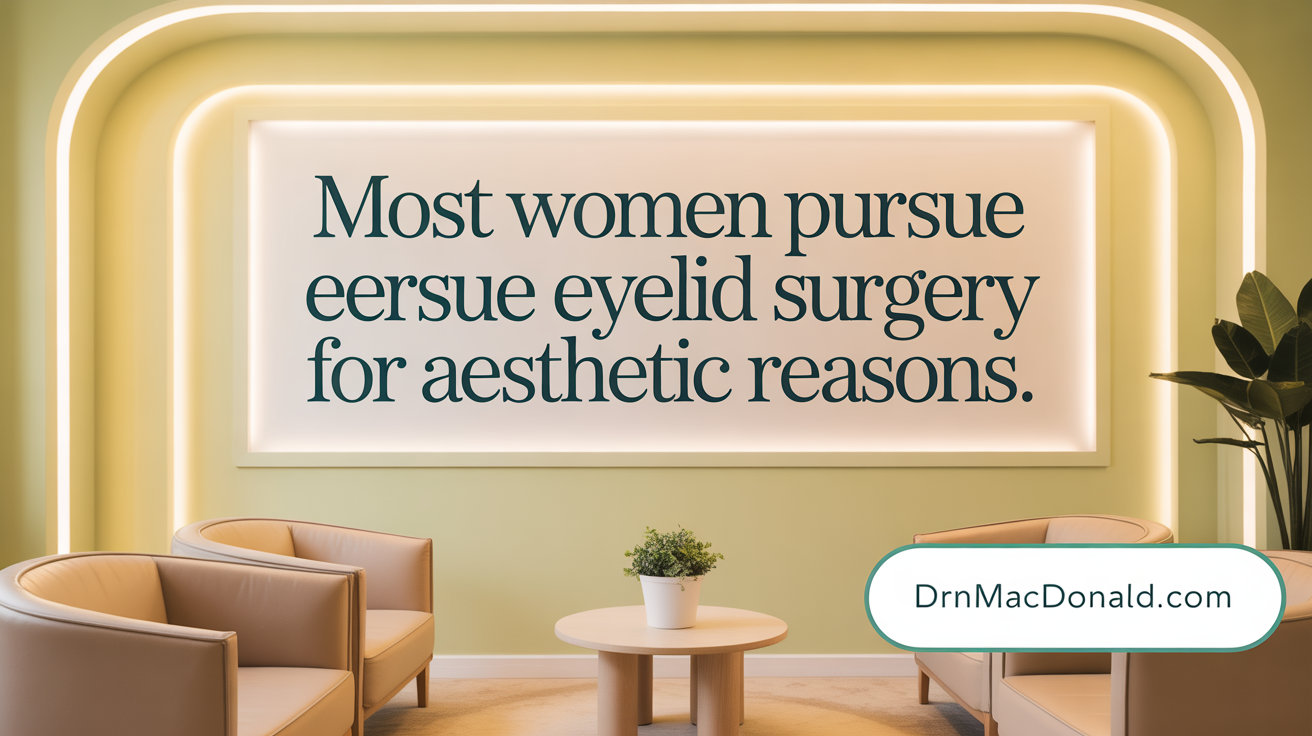
Female motivations
Many women pursue eyelid surgery, or blepharoplasty, primarily to enhance their appearance. They often seek a more youthful, rested look, which can improve confidence and overall facial harmony.
Age groups and aesthetic goals
Women across various age groups opt for eyelid procedures, with younger women in their 20s and 30s aiming to address early signs of aging or maintain their appearance. In contrast, women over 40 often seek to reduce sagging and bagginess, achieving a more alert and rejuvenated look.
Cosmetic rejuvenation trends
The trend toward cosmetic rejuvenation has increased, partly driven by social media and celebrity influences. Many women now view eyelid surgery as a way to look energetic and fresh, aligning with modern beauty standards.
This shift reflects a broader acceptance of cosmetic procedures among women, emphasizing personal confidence and aesthetic enhancement.
11. Social Media and Celebrity Influence on Younger Patients
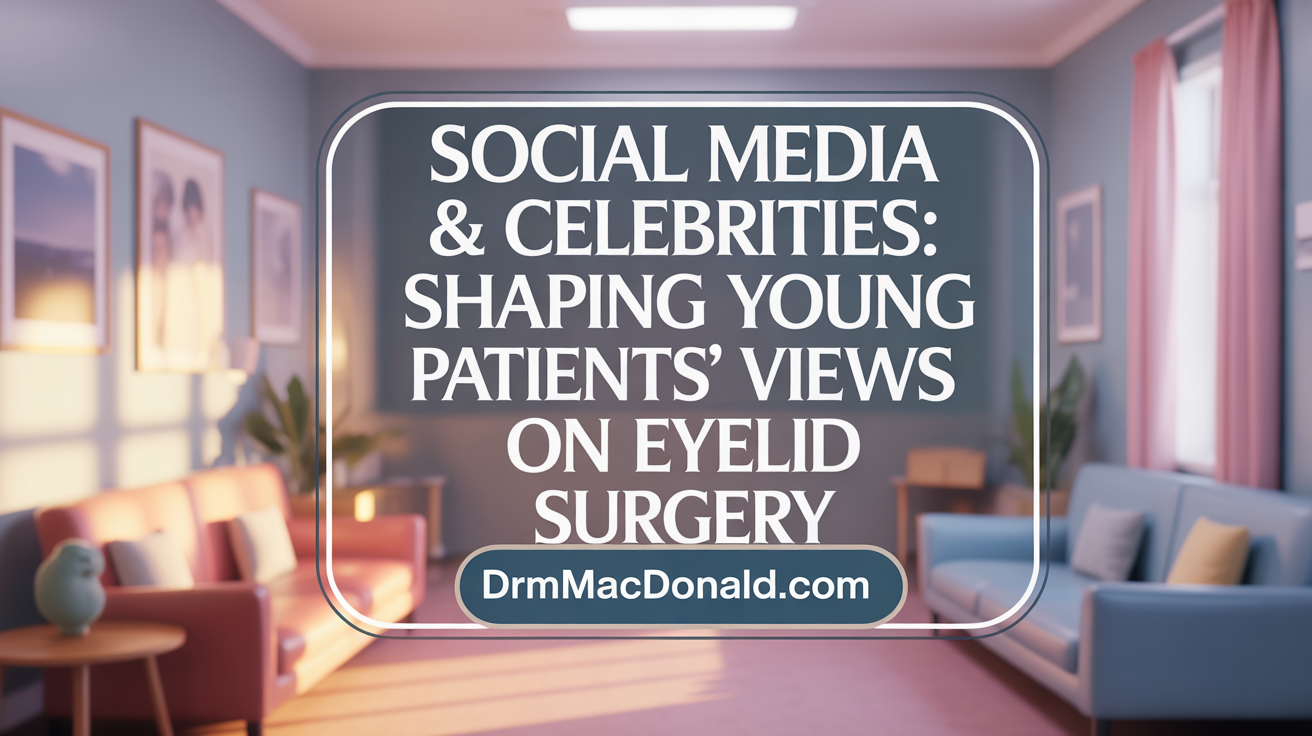
How has the stigma around plastic surgery changed?
In recent years, societal attitudes toward plastic surgery have become more accepting. Social media platforms and celebrities have played a significant role in reducing the negative perceptions traditionally associated with cosmetic procedures.
What impact do celebrities like Kardashians have?
Celebrities such as the Kardashians often share their cosmetic enhancements publicly, helping normalize procedures like eyelid surgery. Their influence encourages more people, especially younger individuals, to consider these options without fear of judgment.
How does this influence younger patients seeking eyelid surgery?
Thanks to the visibility of cosmetic procedures online and celebrity endorsements, younger patients now view eyelid surgery as a common and accessible option. It also inspires interest in early intervention and maintenance treatments, shaping current trends in cosmetic enhancements.
12. Typical Motivations by Age Group for Eyelid Surgery
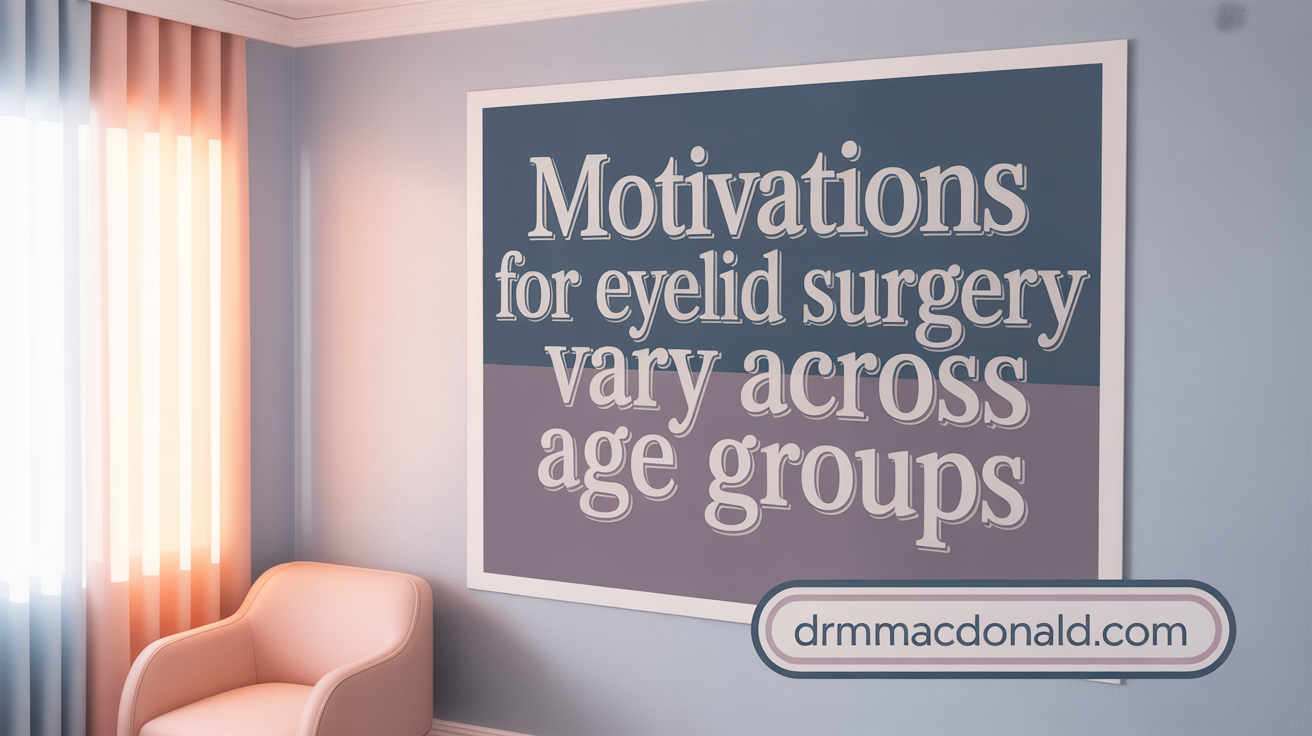 In youth, many seek eyelid procedures to enhance their appearance, improve makeup application, and address genetic or environmental issues like hooded eyelids. Middle-aged adults often pursue blepharoplasty to combat signs of aging, aiming for a more youthful, rested look, and some do so for functional reasons such as improved vision. Older adults might opt for the surgery mainly to correct sagging eyelids that impair vision, combining cosmetic benefits with improved eye function.
In youth, many seek eyelid procedures to enhance their appearance, improve makeup application, and address genetic or environmental issues like hooded eyelids. Middle-aged adults often pursue blepharoplasty to combat signs of aging, aiming for a more youthful, rested look, and some do so for functional reasons such as improved vision. Older adults might opt for the surgery mainly to correct sagging eyelids that impair vision, combining cosmetic benefits with improved eye function.
13. Functional Indications and Medical Considerations by Age
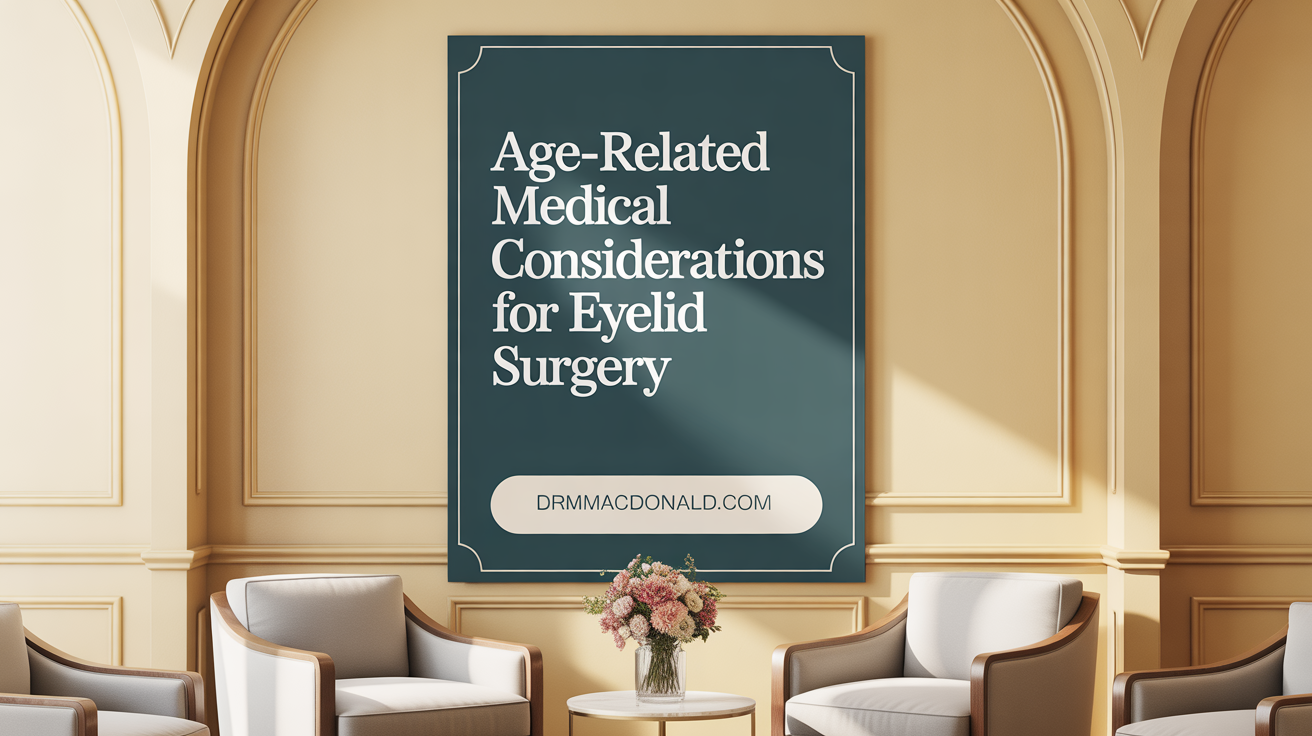
Visual Field Obstruction in Older Patients
Eyelid drooping can impair peripheral vision, especially in individuals over 40. Medicare and other insurers often require documented visual field testing before approving functional blepharoplasty. These tests assess whether excess eyelid skin obstructs the patient's line of sight.
Functional Benefits vs Cosmetic
While many seek eyelid surgery for appearance, it also offers significant functional benefits. Restoring clear vision and reducing eyelid heaviness can improve daily activities, safety, and overall quality of life.
Preoperative Testing and Documentation
Medical professionals must thoroughly evaluate candidates with detailed eye exams, including visual field tests, photographs, and measurement of eyelid positions. Documents should clearly describe symptoms, physical findings, and tests to justify the necessity of the procedure, especially if the surgery is deemed medically necessary rather than purely cosmetic.
14. Surgical Risks Vary According to Patient Age and Health
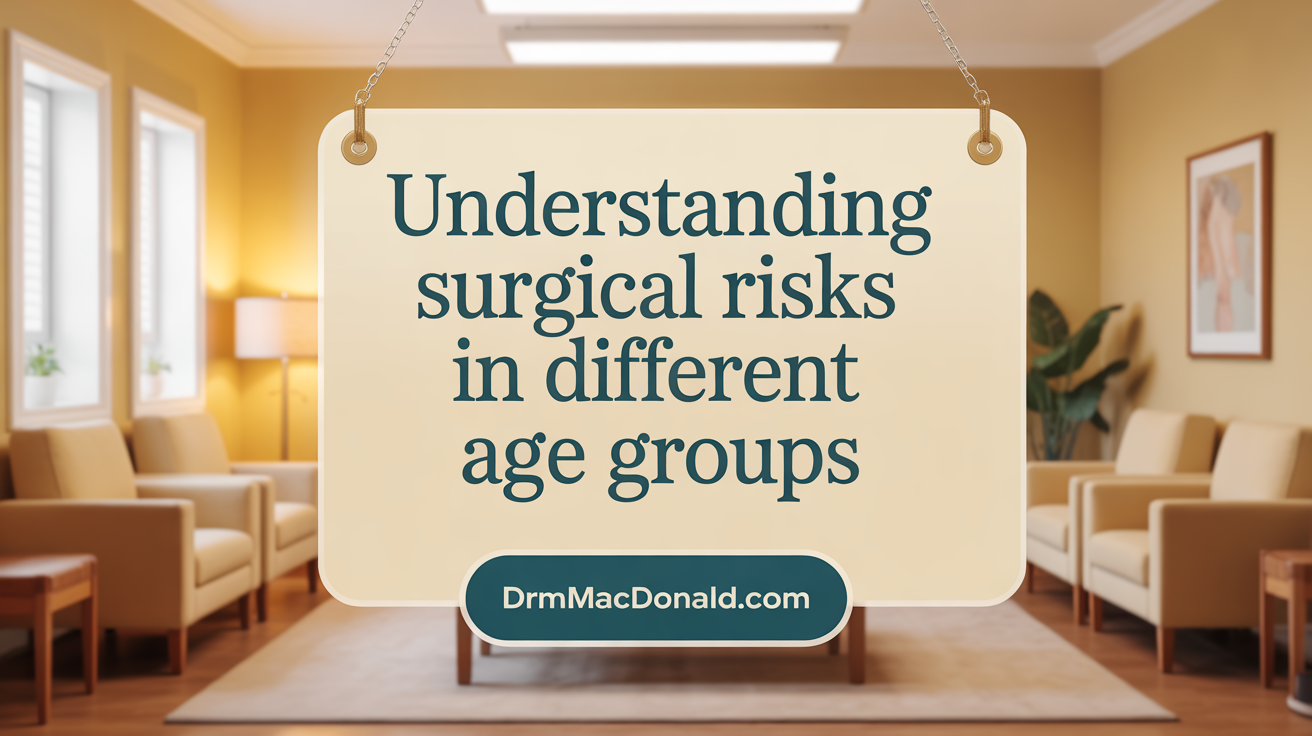 Elderly patients face higher surgical risks with eyelid procedures, especially those over 65, due to decreased healing ability and greater likelihood of complications.
Elderly patients face higher surgical risks with eyelid procedures, especially those over 65, due to decreased healing ability and greater likelihood of complications.
Recovery in older individuals may be longer, with increased chances of bruising, swelling, and dry eyes. They might also experience more noticeable changes in skin sensation.
A thorough health evaluation is crucial for all candidates, particularly older adults, to assess suitability and reduce potential risks. Medical history, current health status, and eye conditions should be carefully reviewed to ensure a safe procedure and optimal results.
15. Typical Longevity of Blepharoplasty Results by Age
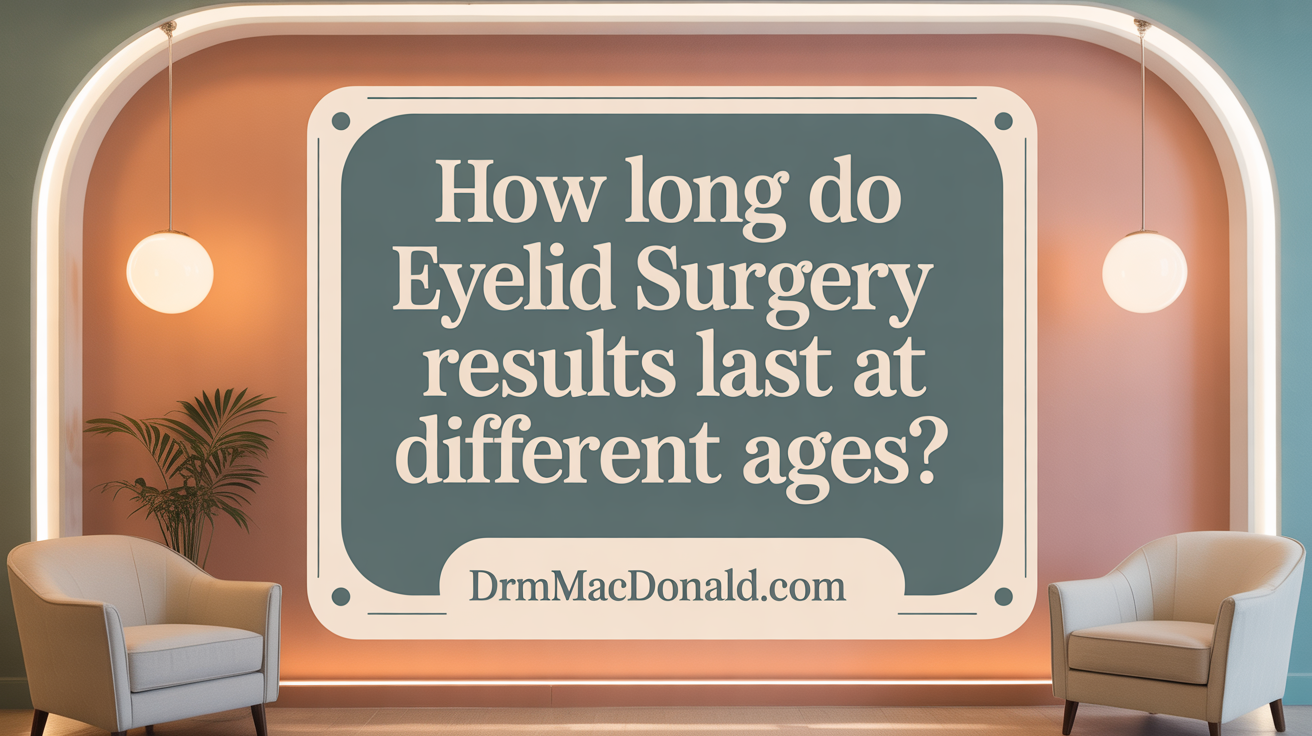 Eyelid surgery results generally last between 5 to 15 years. Younger patients tend to enjoy longer-lasting effects, sometimes retaining their improved appearance for over a decade. As individuals age, natural factors like skin elasticity decline, and new drooping or puffiness may develop over time, often necessitating touch-up procedures. For many, especially those in their 30s and early 40s, maintaining a youthful look might involve minor enhancements every 10 to 15 years. Therefore, the longevity of eyelid surgery varies widely depending on age, skin quality, and lifestyle factors.
Eyelid surgery results generally last between 5 to 15 years. Younger patients tend to enjoy longer-lasting effects, sometimes retaining their improved appearance for over a decade. As individuals age, natural factors like skin elasticity decline, and new drooping or puffiness may develop over time, often necessitating touch-up procedures. For many, especially those in their 30s and early 40s, maintaining a youthful look might involve minor enhancements every 10 to 15 years. Therefore, the longevity of eyelid surgery varies widely depending on age, skin quality, and lifestyle factors.
16. The Role of Age in Determining Surgical Techniques

How does age influence the choice of surgical methods?
Younger patients often prefer less invasive options, such as shorter incision techniques, which aim to minimize scarring and downtime. These methods, like certain laser-based or minimally invasive procedures, focus on early signs of eyelid aging, such as subtle skin laxity or hooding.
In contrast, older patients usually require more extensive surgery, as their eyelids often display significant excess skin and tissue. Traditional blepharoplasty with longer incisions may be necessary to remove larger amounts of tissue and achieve optimal results.
Advancements in surgical techniques are largely driven by the increasing number of younger candidates seeking preventive or maintenance procedures. Innovations such as shorter incisions and collagen-inducing treatments are making eyelid rejuvenation more accessible and appealing to a broader age range.
| Patient Age Group | Typical Procedure | Surgical Approach | Main Focus |
|---|---|---|---|
| Younger (18-39) | Minimally invasive eyelid procedures | Shorter incisions, laser, or non-surgical options | Early signs of aging, maintenance |
| Older (40-65+) | Traditional blepharoplasty | Longer incisions, tissue removal | Sagging, excess skin, functional issues |
| Elderly (>65) | Caution advised | Usually less invasive, if any | Risks outweigh benefits |
As techniques continue to evolve, the trend toward tailoring procedures based on patient age helps optimize outcomes and patient satisfaction.
17. Asian Eyelid Surgery Patients Tend to Be Younger
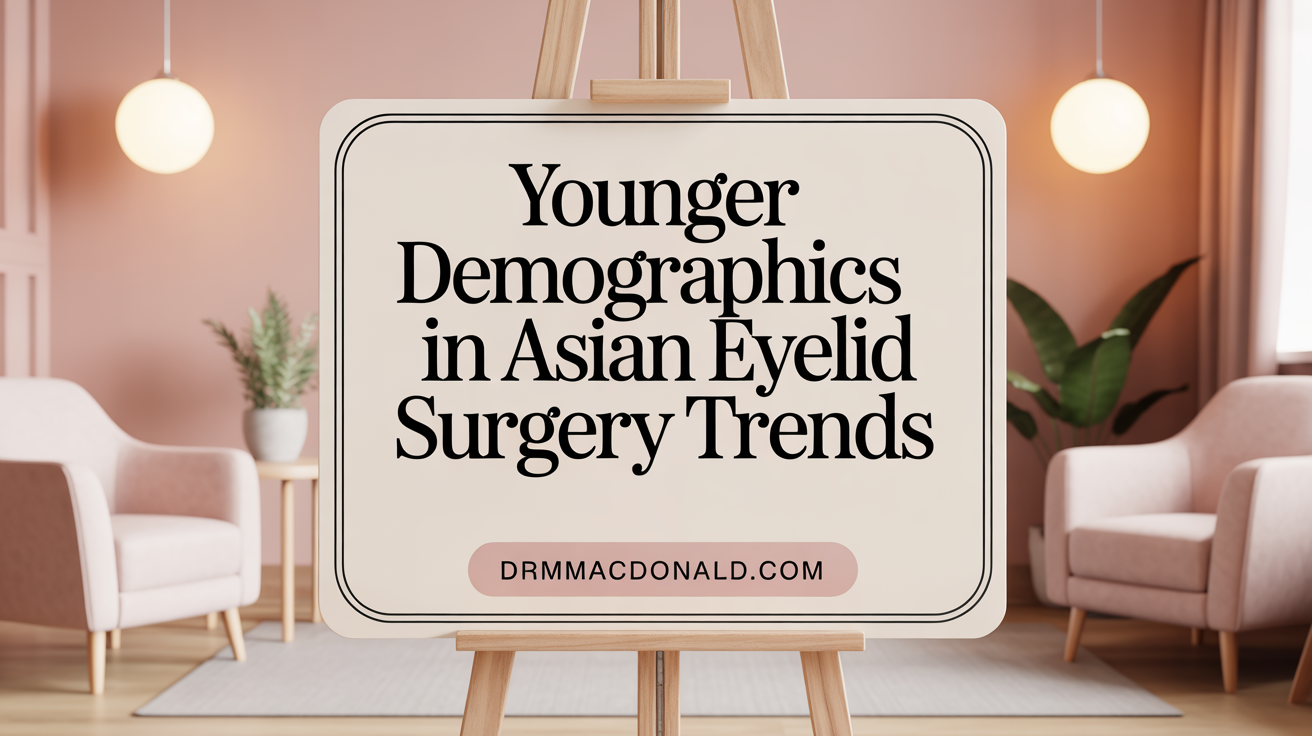 Asian eyelid surgery, or blepharoplasty, is often performed on patients in their 30s, but there is a noticeable trend of younger individuals seeking the procedure. Data shows that many patients in their late teens and twenties are interested in creating a more defined eyelid crease or addressing early signs of heaviness. This popularity reflects cultural preferences for specific eye shapes and a desire for a more youthful appearance early on.
Asian eyelid surgery, or blepharoplasty, is often performed on patients in their 30s, but there is a noticeable trend of younger individuals seeking the procedure. Data shows that many patients in their late teens and twenties are interested in creating a more defined eyelid crease or addressing early signs of heaviness. This popularity reflects cultural preferences for specific eye shapes and a desire for a more youthful appearance early on.
In terms of demographics, younger Asians are motivated by both aesthetic and functional reasons, such as enhancing overall facial harmony and improving vision if eyelid heaviness impairs sight. The cultural importance of specific eye features, like the double eyelid, plays a role in the high demand.
This shift towards younger patients is also driving innovations in surgical techniques. Less invasive methods with shorter healing times are especially appealing to this group seeking quick, effective results. Overall, the trend indicates a movement towards preventative and early intervention in aesthetic eyelid surgery among Asian populations.
18. Age Recommendations and Surgical Suitability for Blepharoplasty
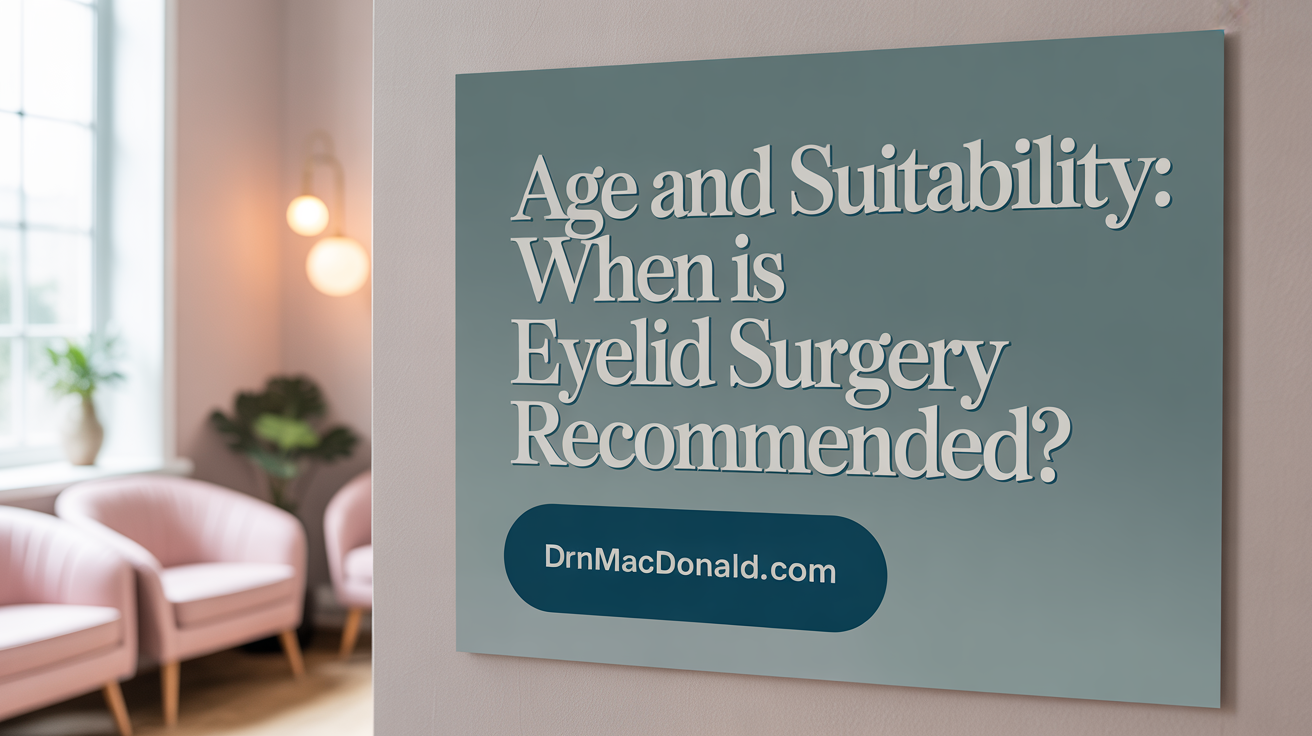 Eyelid surgery is generally recommended for individuals aged 18 and older, as facial features are typically fully developed by this age. The best results are often seen in patients over 40, with many achieving optimal outcomes around age 55. While older adults can benefit from the procedure, those over 65 are usually advised against due to increased surgical risks. Younger candidates, particularly those in their 20s and 30s, often seek early intervention to address issues like eyelid heaviness or for cosmetic reasons, aiming to prevent more pronounced aging later. Overall, suitability depends on individual health, eye condition, and aesthetic goals.
Eyelid surgery is generally recommended for individuals aged 18 and older, as facial features are typically fully developed by this age. The best results are often seen in patients over 40, with many achieving optimal outcomes around age 55. While older adults can benefit from the procedure, those over 65 are usually advised against due to increased surgical risks. Younger candidates, particularly those in their 20s and 30s, often seek early intervention to address issues like eyelid heaviness or for cosmetic reasons, aiming to prevent more pronounced aging later. Overall, suitability depends on individual health, eye condition, and aesthetic goals.
19. Impact of Blepharoplasty on Appearance Across Ages
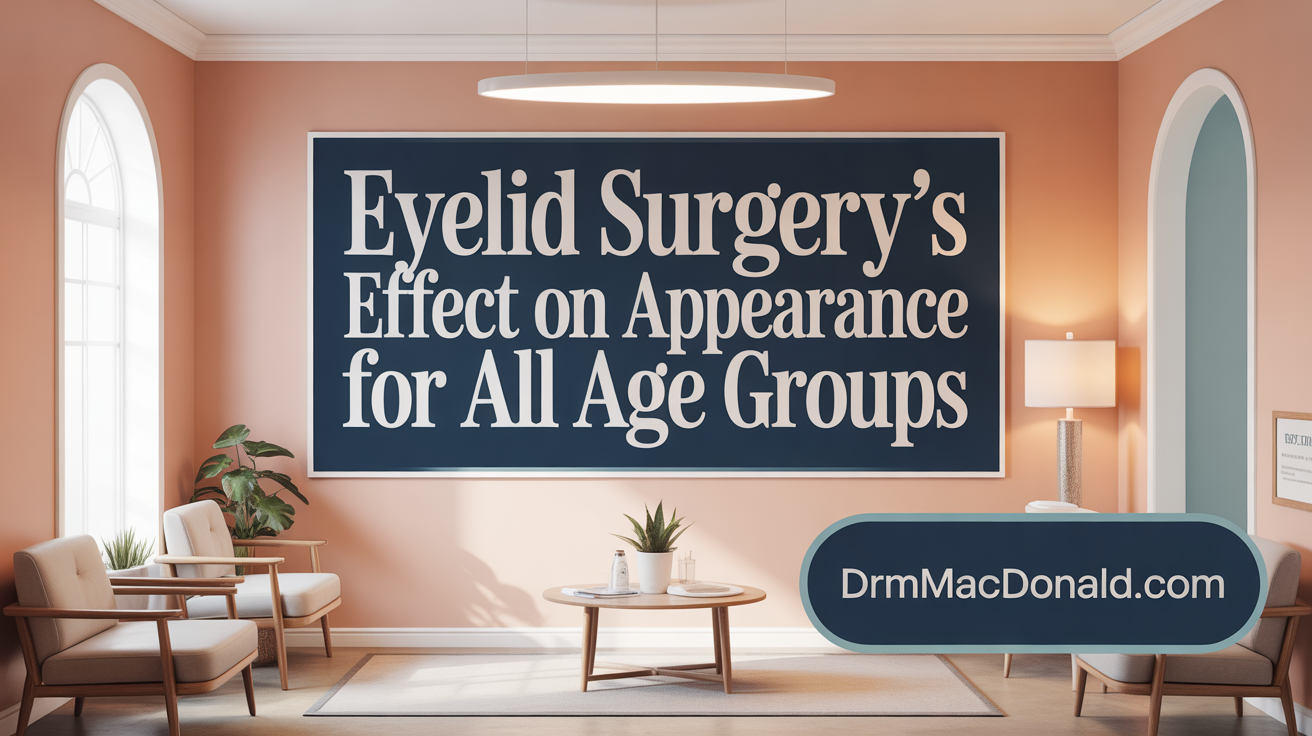 Eyelid surgery can significantly rejuvenate a person's look, often making patients appear several years younger. Improvements extend to enhanced eye shape and better symmetry, contributing to a more balanced and natural appearance. Many patients also report a boost in self-confidence after the procedure, feeling more comfortable and refreshed in their daily lives.
Eyelid surgery can significantly rejuvenate a person's look, often making patients appear several years younger. Improvements extend to enhanced eye shape and better symmetry, contributing to a more balanced and natural appearance. Many patients also report a boost in self-confidence after the procedure, feeling more comfortable and refreshed in their daily lives.
20. The Average Age for Optimal Eyelid Surgery Outcomes
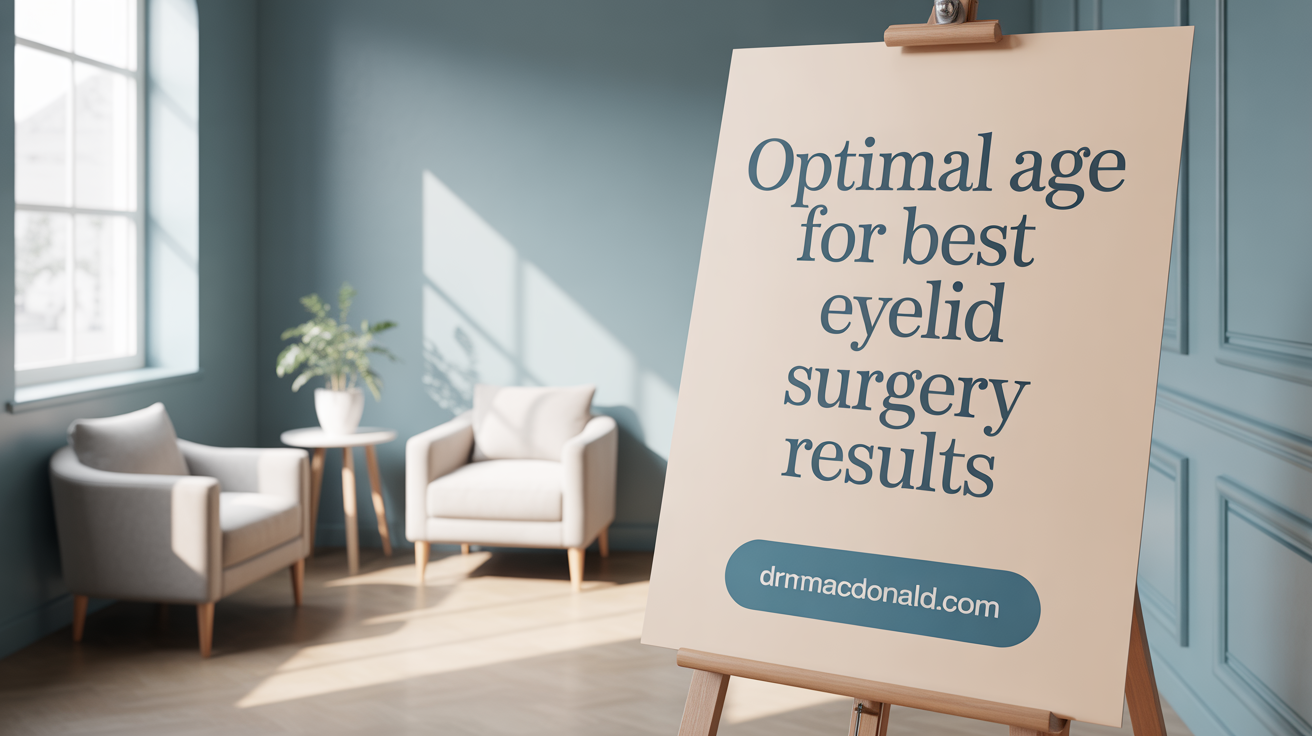
Patients 30 and over see best results
Most patients who undergo eyelid surgery tend to be in their 40s and 50s, with the average age around 55. These individuals often experience the most noticeable and durable improvements.
Factors influencing success
Success depends on several factors, including overall health, skin quality, and the extent of eyelid sagging. Younger patients, typically in their late 30s and early 40s, can benefit from less invasive procedures that halt or slow signs of aging.
Importance of skin elasticity and muscle tone
Healthy skin elasticity and firm muscle tone play crucial roles. As skin loses elasticity with age, drooping eyelids become more prominent. Nevertheless, younger patients usually have better skin and muscle condition, which leads to more natural and long-lasting results.
21. Eyelid Surgery and Makeup Benefits in Younger Patients

How does eyelid surgery improve makeup application for younger patients?
Younger patients often seek eyelid procedures to enhance their appearance, which allows for easier makeup application. With less excess skin and a more defined eyelid shape, makeup can be applied more smoothly, creating a more polished and expressive look.
How does eyelid surgery help maintain expressive facial movements?
Early eyelid surgery helps preserve the ability to express emotions fully, as the procedure can lift heavy or drooping eyelids that may hinder natural facial expressions. This results in a more vibrant, alert appearance.
What motivates younger patients to consider eyelid surgery?
Many young patients are driven by cosmetic concerns, aiming to improve their appearance through a more youthful and rested look. They also seek procedures to enhance their overall facial symmetry and confidence, with some motivated by social media influence and celebrity trends.
| Benefit | Explanation | Additional Notes |
|---|---|---|
| Better Makeup Application | Easier and smoother makeup application due to defined eyelids | Particularly important for those who enjoy eye makeup |
| Dynamic Facial Expressions | Enhanced ability to express emotions naturally | Maintains facial liveliness and communication |
| Motivation for Cosmetic Appearance | Desire for a youthful, rested look with improved symmetry | Influenced by social media and personal aesthetic goals |
This trend reflects an evolving attitude towards cosmetic procedures, emphasizing both aesthetic and functional benefits for younger individuals.
22. Repeat Blepharoplasty Frequency and Age Considerations
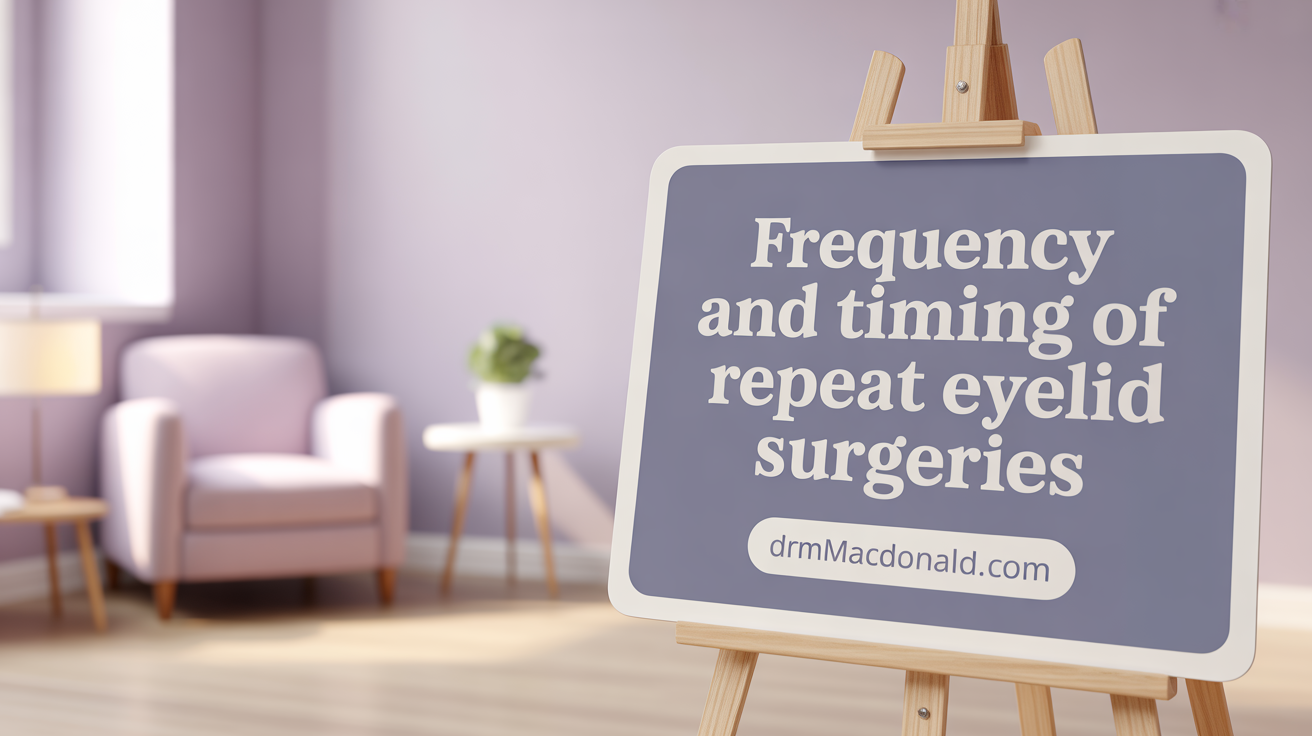 Most patients can expect to wait around 10 to 15 years before needing a second eyelid surgery, depending on individual aging and lifestyle factors. Younger patients, particularly those in their 20s and 30s, often opt for initial procedures early to maintain a youthful appearance. While multiple surgeries are generally safe, each additional procedure may carry increased risks such as scarring, changes in sensation, or dry eye issues. Age also plays an important role; patients over 65 typically face higher surgical risks, influencing the frequency and timing of repeat surgeries. Overall, most individuals plan their second blepharoplasty at a later age, aligning with the natural aging process and personal aesthetic goals.
Most patients can expect to wait around 10 to 15 years before needing a second eyelid surgery, depending on individual aging and lifestyle factors. Younger patients, particularly those in their 20s and 30s, often opt for initial procedures early to maintain a youthful appearance. While multiple surgeries are generally safe, each additional procedure may carry increased risks such as scarring, changes in sensation, or dry eye issues. Age also plays an important role; patients over 65 typically face higher surgical risks, influencing the frequency and timing of repeat surgeries. Overall, most individuals plan their second blepharoplasty at a later age, aligning with the natural aging process and personal aesthetic goals.
23. Eyelid Surgery and Age-Related Changes in Facial Anatomy
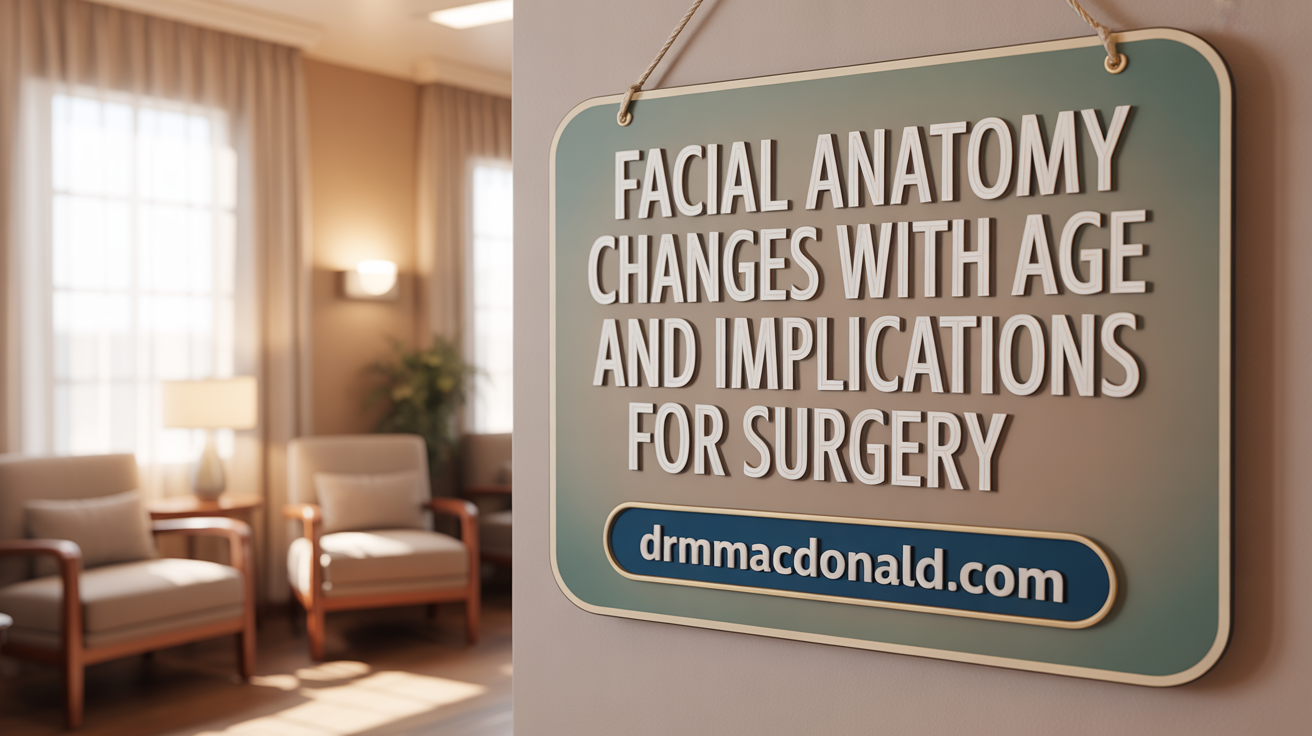
How does skin elasticity decline from the mid-20s?
Starting around age 25, skin begins to lose its natural firmness and elasticity. This gradual decrease causes the skin to sag and form folds, especially around the eyes, leading to drooping eyelids and bags.
What about muscle weakening?
With age, the muscles that support the eyelids also weaken. This contributes to sagging and drooping of the eyelids, which can impair vision and alter facial appearance.
How does fat redistribution and bone loss impact eyelids?
As we age, fat deposits may shift downward, creating puffiness in the lower lids and hollowing in other areas. Additionally, gradual bone loss in the facial structure can deepen eye sockets, accentuating sagging and skin laxity around the eyes.
24. Why Elderly Patients Over 65 Are Generally Advised Against Blepharoplasty
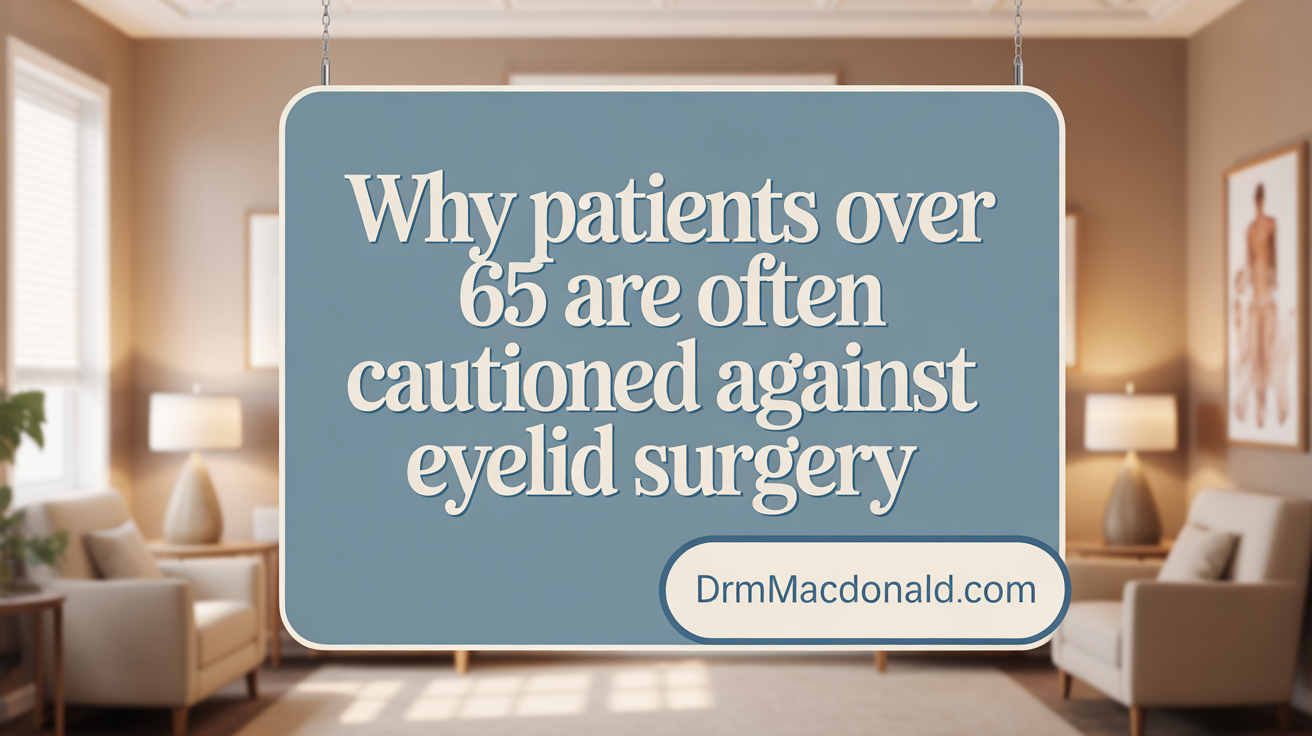 Elderly patients over 65 are usually advised against undergoing eyelid surgery due to increased surgical risks associated with age. As we get older, tissues become more fragile, making healing more challenging and increasing the chances of complications such as infection or scarring.
Elderly patients over 65 are usually advised against undergoing eyelid surgery due to increased surgical risks associated with age. As we get older, tissues become more fragile, making healing more challenging and increasing the chances of complications such as infection or scarring.
Additionally, the body's ability to recover quickly decreases, and there’s a higher likelihood of dry eyes, difficulty closing the eyes, or adverse reactions. Because of these factors, surgeons often consider alternative, less invasive treatments like laser tightening or Botox. These options can improve eyelid appearance without the risks linked to invasive surgery, making them more suitable for older patients.
25. The Expanding Age Range of Candidates Reflects Evolving Aesthetic Norms
 The range of candidates for eyelid surgery has broadened significantly, especially toward younger adults. Traditionally popular among those over 40, recent data shows increasing interest among individuals in their 20s and 30s. This shift is partly driven by a greater social acceptance of cosmetic procedures, influenced by celebrities and social media personalities who openly showcase their transformations.
The range of candidates for eyelid surgery has broadened significantly, especially toward younger adults. Traditionally popular among those over 40, recent data shows increasing interest among individuals in their 20s and 30s. This shift is partly driven by a greater social acceptance of cosmetic procedures, influenced by celebrities and social media personalities who openly showcase their transformations.
Younger patients often seek eyelid surgery for both aesthetic reasons and functional improvements, such as enhanced vision from drooping eyelids. The perception of plastic surgery as unconventional has diminished, leading to a more normalized view of aging and beauty standards. As a result, more young adults are motivated to pursue minor or preventive procedures like laser treatments, Botox, or smaller, less invasive eyelid corrections.
Looking ahead, this trend suggests that the community of eyelid surgery candidates will continue to diversify. Advances in surgical techniques, shorter recovery times, and broader social acceptance will likely encourage more youthful individuals to seek early intervention, shaping future standards of beauty and self-care.
How common is blepharoplasty and recent trends in procedures performed?
Blepharoplasty is a highly popular facial cosmetic procedure, with over 120,000 surgeries performed in the United States in 2023, making it the most common facial surgery that year. The number of eyelid surgeries has steadily increased, with a 13% rise from 2019 to 2022 and an additional 5% growth in 2023. This growth highlights the rising interest among diverse age groups, including younger adults in their 20s and 30s.
Recent advancements in surgical techniques, such as shorter incisions and minimally invasive procedures, have made eyelid surgery more accessible and appealing. Societal acceptance is also growing, partly due to social media influence, celebrity endorsements, and a diminishing stigma around cosmetic procedures.
Eyelid surgery remains a top-five cosmetic surgery in the US, driven by a desire for more youthful, alert appearances and functional benefits like improved vision. The trend indicates that blepharoplasty continues to be a popular and evolving option for facial rejuvenation across the nation.
Who is not a good candidate for blepharoplasty?
Who is not a good candidate for blepharoplasty?
Not everyone considering eyelid surgery is an ideal candidate. Medical health plays a significant role in determining suitability. Individuals with certain medical conditions—such as severe dry eye syndrome, uncontrolled diabetes, or glaucoma—may face increased risks during surgery or experience impaired healing.
Heavy smokers are also discouraged from undergoing blepharoplasty due to potential complications in wound healing. Severe facial asymmetry or significantly drooping eyebrows may require additional procedures or could limit the satisfaction limits from eyelid surgery alone.
Unrealistic expectations can lead to dissatisfaction. Patients seeking purely cosmetic improvements without understanding the outcomes or limitations might not be suitable candidates.
In addition, overall health status is crucial. Those with uncontrolled health issues, or who are in poor physical health, should consult their healthcare provider before considering surgery.
A thorough evaluation by a qualified surgeon helps determine personal suitability, taking into account eye health, medical conditions, and goals. Proper assessment ensures safety and optimal results.
What medical considerations and indications are important for eyelid surgery relating to age trends?
How does age influence the medical considerations for eyelid surgery?
Age-related changes such as decreased skin elasticity, muscle slackening, fat redistribution, and bone recession significantly impact the approach to eyelid surgery. In younger adults, the focus might be on congenital issues, early signs of aging, or functional concerns like vision obstruction. These patients often prefer less invasive methods, including laser treatment or minimal eyelid procedures.
As patients age, typically into their 40s and 50s, sagging skin, puffiness, and functional issues become more prominent. Surgical plans tend to be more comprehensive, targeting both appearance and function. In the elderly, especially those over 60, health conditions and tissue degeneration require careful assessment to minimize risks, with procedures tailored to individual health status.
Overall, age influences the indications for surgery—whether cosmetic or functional—and guides the choice of technique, extent of tissue removal, and expected healing process.
Are there gender differences in eyelid surgery demographics?
How do motivations for eyelid surgery differ between men and women?
Women are mostly driven by cosmetic reasons, aiming for a more youthful appearance. About 89.3% of women cite aesthetic concerns as their main motivation, particularly among those aged 30 to 35. Men, on the other hand, are more likely to seek surgery for functional and social reasons. Many men report that eyelid surgery helps improve vision and reduces feelings of social embarrassment, with 71.4% citing functional improvements and 63.6% mentioning social discomfort.
Are there age-based differences in gender motivations?
Younger patients, especially those aged 25 to 30, tend to focus more on social factors such as appearance and social acceptance. Women in this age bracket often pursue surgery for aesthetic rejuvenation, while men less frequently seek it for purely cosmetic purposes, showing a tendency toward addressing social embarrassment.
What are the distinctions between functional and cosmetic reasons among different genders?
Women predominantly seek eyelid surgery to enhance beauty and youthful looks. Men are more inclined to pursue these procedures for functional benefits, like improving vision, and to alleviate social discomfort caused by eyelid heaviness or drooping. These variations reflect differing priorities influenced by gender and societal expectations.
| Aspect | Women | Men | Notes |
|---|---|---|---|
| Primary motivation | Cosmetic, youthful appearance | Functional, social embarrassment | Women mainly pursue for beauty; men for function and social reasons |
| Age focus | 30-35 years | 25-30 years | Younger men often seek for social reasons |
| Common concerns | Aging signs, aesthetic enhancement | Vision, heaviness, social embarrassment | Motivations vary visibly between genders |
Understanding these differences helps tailor consultations and treatments for diverse patient needs, recognizing that motivations are shaped by gender and age.
Is 75 years too old for eyelid surgery?
Age considerations
While eyelid surgery is often associated with middle-aged and older adults, age alone is not a strict barrier. Many individuals over 35 and even into their 70s seek blepharoplasty to improve their appearance and vision.
Importance of health status
The overall health condition of the patient is crucial. A thorough medical evaluation is necessary to ensure that they can safely undergo surgery. Factors like skin elasticity, eye health, and absence of serious medical issues play a significant role.
Surgical suitability for elderly
For those in their 75s, if they are in good health and meet the criteria, eyelid surgery can be safely performed. Advanced age does not automatically exclude candidacy. Proper assessment and consultation with a skilled surgeon are essential. Many older patients experience excellent results, enhancing not just their look but also their vision and confidence.
| Age Range | Typical Candidates | Additional Considerations |
|---|---|---|
| 18-39 years | Younger patients with early signs | Primarily aesthetic reasons |
| 40-64 years | Middle-aged adults | Balance of aesthetic and functional needs |
| 65+ years | Older adults | Health assessment critical |
In summary, a 75-year-old can be a good candidate if they are healthy enough for surgery. Personal health factors should outweigh age when considering eyelid procedures.
How long does blepharoplasty last?
Duration of results
The effects of blepharoplasty can last anywhere from 5 to 15 years, depending on individual factors. Typically, upper eyelid surgery results tend to last between 5 and 7 years, while lower eyelid procedures can offer more permanent, lifelong benefits. However, natural aging processes and lifestyle choices influence how long the results remain visible.
Factors influencing longevity
Several elements can affect how long eyelid surgery results remain optimal. These include genetic predispositions, skin quality, exposure to sunlight, and overall skin elasticity. For example, those with better skin resilience and less sun damage may enjoy longer-lasting results.
Age-related effects
As people age, their skin loses collagen and elasticity, which can lead to eyelid sagging or drooping again over time. Even after a successful blepharoplasty, aging will continue to impact the eyelid area. Many patients consider touch-up procedures to maintain their appearance.
Maintaining results
Proper aftercare—such as protecting the skin from sun damage, avoiding smoking, and maintaining a healthy lifestyle—can help prolong the effects of the surgery. Regular skin care and sunblock use are recommended to maximize longevity.
| Factor | Impact on Duration | Additional Notes |
|---|---|---|
| Age at surgery | Younger patients may enjoy longer results | Aging eventually affects all patients |
| Sun exposure | Promotes skin aging and sagging | Use sun protection consistently |
| Skin type | Thicker skin may age slower | Skin health influences results |
| Lifestyle habits | Smoking and poor diet accelerate aging | Healthy habits support longevity |
Understanding these factors can help in setting realistic expectations and planning for future touch-ups if desired. Overall, blepharoplasty offers durable results, but ongoing care and aging processes will influence how long those benefits last.
How many times can a patient undergo upper blepharoplasty?
There is no strict upper limit on the number of times a patient can undergo upper blepharoplasty. The decision largely depends on individual tissue condition, anatomy, and whether there are issues like scarring or adhesions from previous surgeries. Typically, a well-executed initial procedure provides lasting results for about a decade, but some patients may opt for repeat surgeries if they experience further drooping or other concerns.
However, multiple procedures must be approached with caution. Risks increase with each surgery, including scarring, asymmetry, or eyelid malposition. The surgical plan must carefully assess remaining tissue, eyelid function, and changes from prior operations.
With meticulous planning and technique, repeat upper blepharoplasty can be performed safely. Nevertheless, surgeons usually limit the number of procedures to minimize complications, emphasizing the importance of comprehensive evaluation before each surgery.
Conclusion: Age Defines Trends but All Ages Pursue Eyelid Surgery
Eyelid surgery appeals to a wide age range from young adults seeking preventive or cosmetic improvements to older patients desiring both aesthetic rejuvenation and functional relief. The majority of patients are middle-aged and older, but the rise in younger patient interest reflects changing societal norms and advances in technique. Understanding the demographics by age helps highlight the distinct motivations, benefits, and risks associated with blepharoplasty. As technology and perceptions evolve, more individuals across generations are finding value in eyelid surgery, which continues to be a leading cosmetic procedure with lasting, satisfying outcomes.
References
- Blepharoplasty patients are getting younger – here's why | ASPS
- Asian Eyelid Surgery Facts: Statistics for Youth vs Adults
- What is the average age for an eyelid surgery? - Portland Face Doctor
- Fact Sheet for Documenting the Need for Functional Blepharoplasty
- See More Clearly With Eyelid Surgery | Dr. Al Cohn
- 8 Things to Know About Eyelid Surgery - Healthgrades Health Library
- Eyelid Surgery Statistics By dsherris on July 21, 2021
- Blepharoplasty - Mayo Clinic
- Blepharoplasty: An Overview - PMC - PubMed Central
- Blepharoplasty (Eyelid Surgery): What It Is, Details & Recovery
